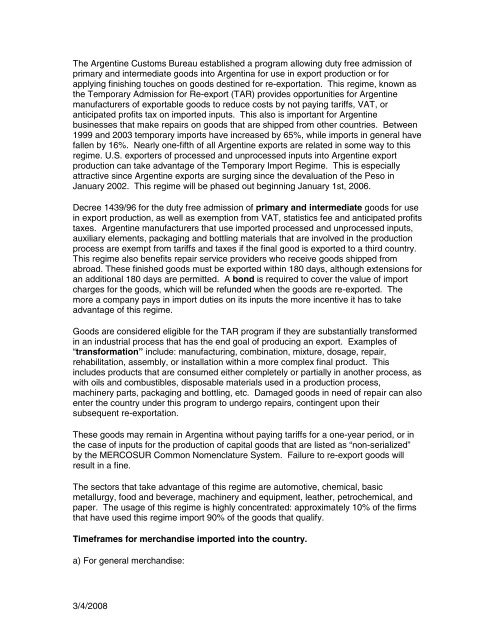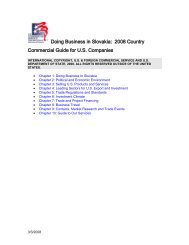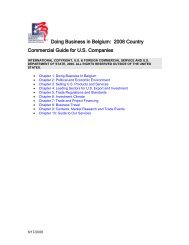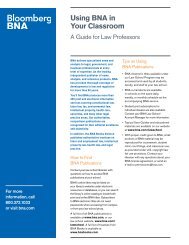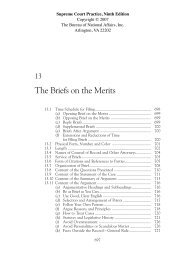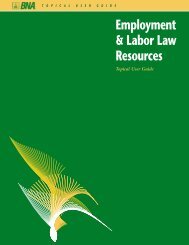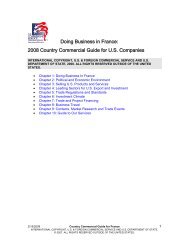You also want an ePaper? Increase the reach of your titles
YUMPU automatically turns print PDFs into web optimized ePapers that Google loves.
The Argentine Customs Bureau established a program allowing duty free admission of<br />
primary and intermediate goods into <strong>Argentina</strong> for use in export production or for<br />
applying finishing touches on goods destined for re-exportation. This regime, known as<br />
the Temporary Admission for Re-export (TAR) provides opportunities for Argentine<br />
manufacturers of exportable goods to reduce costs by not paying tariffs, VAT, or<br />
anticipated profits tax on imported inputs. This also is important for Argentine<br />
businesses that make repairs on goods that are shipped from other countries. Between<br />
1999 and 2003 temporary imports have increased by 65%, while imports in general have<br />
fallen by 16%. Nearly one-fifth of all Argentine exports are related in some way to this<br />
regime. U.S. exporters of processed and unprocessed inputs into Argentine export<br />
production can take advantage of the Temporary Import Regime. This is especially<br />
attractive since Argentine exports are surging since the devaluation of the Peso in<br />
January 2002. This regime will be phased out beginning January 1st, 2006.<br />
Decree 1439/96 for the duty free admission of primary and intermediate goods for use<br />
in export production, as well as exemption from VAT, statistics fee and anticipated profits<br />
taxes. Argentine manufacturers that use imported processed and unprocessed inputs,<br />
auxiliary elements, packaging and bottling materials that are involved in the production<br />
process are exempt from tariffs and taxes if the final good is exported to a third country.<br />
This regime also benefits repair service providers who receive goods shipped from<br />
abroad. These finished goods must be exported within 180 days, although extensions for<br />
an additional 180 days are permitted. A bond is required to cover the value of import<br />
charges for the goods, which will be refunded when the goods are re-exported. The<br />
more a company pays in import duties on its inputs the more incentive it has to take<br />
advantage of this regime.<br />
Goods are considered eligible for the TAR program if they are substantially transformed<br />
in an industrial process that has the end goal of producing an export. Examples of<br />
“transformation” include: manufacturing, combination, mixture, dosage, repair,<br />
rehabilitation, assembly, or installation within a more complex final product. This<br />
includes products that are consumed either completely or partially in another process, as<br />
with oils and combustibles, disposable materials used in a production process,<br />
machinery parts, packaging and bottling, etc. Damaged goods in need of repair can also<br />
enter the country under this program to undergo repairs, contingent upon their<br />
subsequent re-exportation.<br />
These goods may remain in <strong>Argentina</strong> without paying tariffs for a one-year period, or in<br />
the case of inputs for the production of capital goods that are listed as “non-serialized”<br />
by the MERCOSUR Common Nomenclature System. Failure to re-export goods will<br />
result in a fine.<br />
The sectors that take advantage of this regime are automotive, chemical, basic<br />
metallurgy, food and beverage, machinery and equipment, leather, petrochemical, and<br />
paper. The usage of this regime is highly concentrated: approximately 10% of the firms<br />
that have used this regime import 90% of the goods that qualify.<br />
Timeframes for merchandise imported into the country.<br />
a) For general merchandise:<br />
3/4/2008


